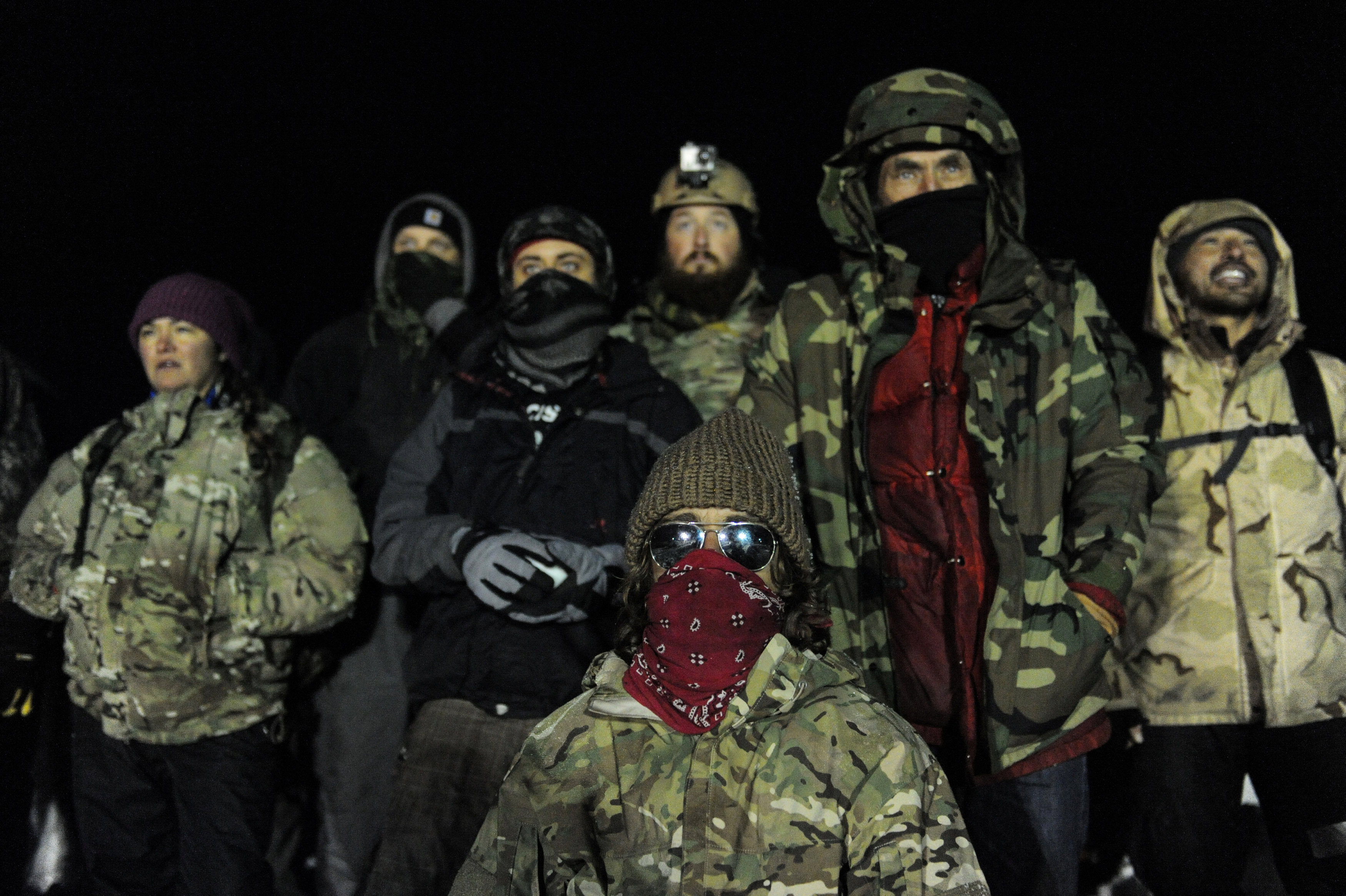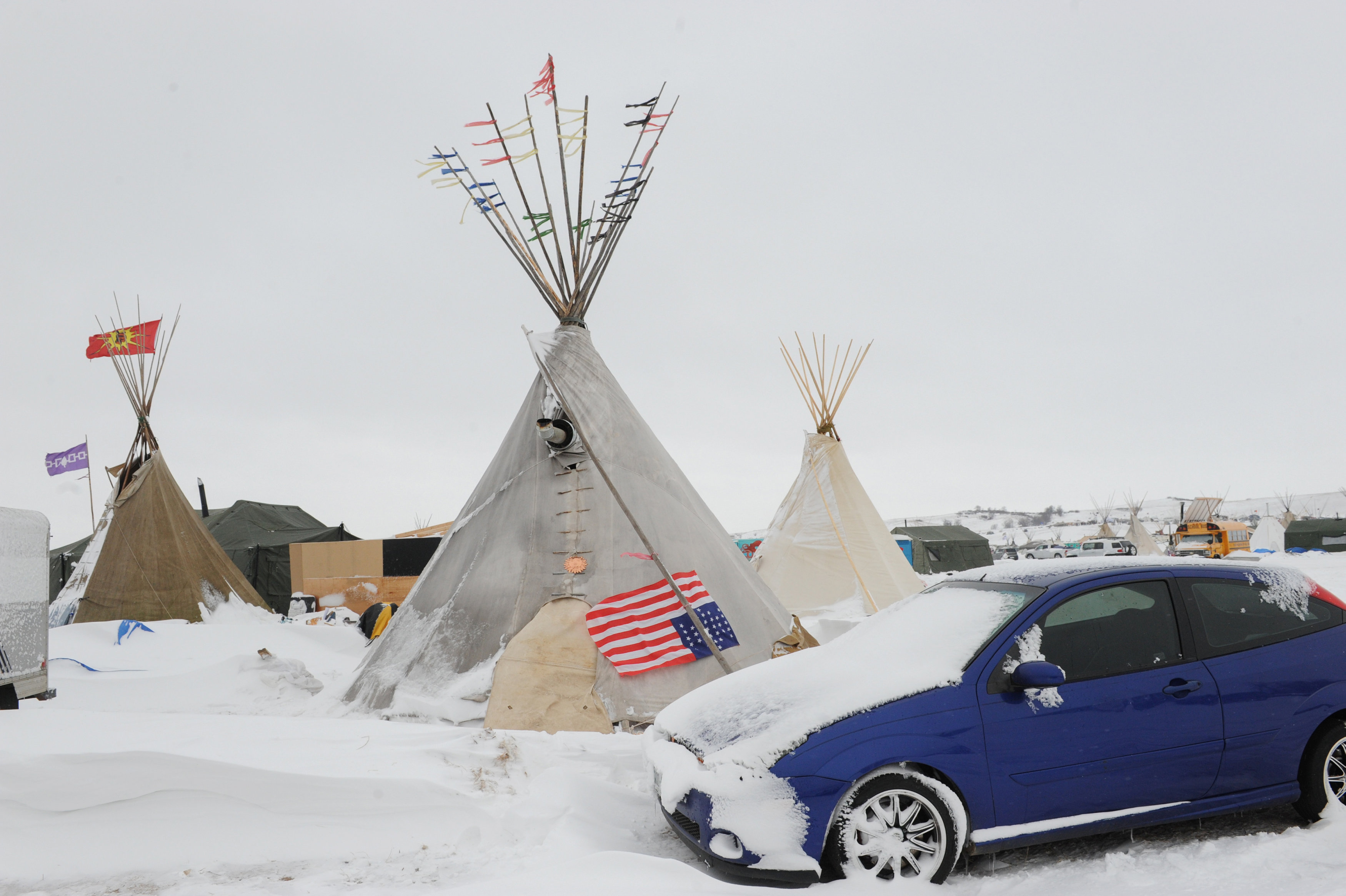
By Valerie Volcovici
CANNON BALL, N.D. (Reuters) – Two weeks after a victory in their fight against the Dakota Access Pipeline, most protesters have cleared out of the main protest camp in North Dakota – but about 1,000 are still there, and plan to remain through the winter.
These folks say they are dug in at the Oceti Sakowin Camp in Cannon Ball, North Dakota, despite the cold, for a few reasons. Most are Native Americans, and want to support the tribal sovereignty effort forcefully argued by the Standing Rock Sioux, whose land is adjacent to the pipeline being built.
Others say they worry that Energy Transfer Partners LP <ETP.N>, the company building the $3.8 billion project, will resume construction without people on the ground, even though the tribes and the company are currently locked in a court battle.
Future decisions on the 1,172-mile (1,885-km) pipeline are likely to come through discussions with the incoming administration of Donald Trump, or in courtrooms.
“I’ve seen some of my friends leave but I will be here until the end and will stand up to Trump if he decides to approve the permit,” said Victor Herrald, of the Cheyenne River Sioux Tribe in South Dakota, who has been at the camp since August.
At one point the camp had about 10,000 people, including about 4,000 veterans who showed up in early December – just before the U.S. Army Corps of Engineers denied a key easement needed to allow the Dakota Access Pipeline to run under Lake Oahe, a reservoir formed by a dam on the Missouri River.
After the Corps decision, Standing Rock chairman Dave Archambault asked protesters to go home. The camp’s population now runs from 700 to 1,000, depending on the day, and many come from the nearby Standing Rock reservation where they live.
Those left say they are there to “show our strengths,” as Bucky Harjo, 63, of the Paiute tribe, from Reno, Nevada, put it, while the tribe deals with the legal battle.
Logistics are key for those still at the camp, located on federal land. Theron Begay, a Navajo journeyman who is a certified construction worker and heavy machine operator, has been put in charge of winterizing the camp. He is training volunteers to build structures that can withstand sub-zero temperatures and bitter winds, as well as compost toilets.
Some people at the camp have gotten pneumonia, and they and others went to an emergency shelter that was built three miles away to escape the cold.
Because the Oceti Sakowin camp is located on a flood plain, waste from the camp poses risks to the nearby Cannonball River. Tribal leaders have said the camp may need to move if it wants to remain active. Begay said the structures can be “disassembled like a puzzle in two hours” and re-established on drier ground.
North Dakota’s Governor Jack Dalrymple said in a Tuesday statement that he and Archambault recently met to discuss reducing tensions between the tribe and law enforcement. They are discussing reopening the nearby Backwater Bridge on state highway 1806, which has been blockaded since Oct. 27, when activists set vehicles on fire.
Harjo said he will leave “when I see the drill pad removed and DAPL out of here, and when they reopen 1806 and when we are free to go at our own will and not be targeted on the highway.”
NEXT STEPS
Tom Goldtooth, executive director of the Indigenous Environmental Network, and a constant presence in the camp, said the protest is transitioning “to the next level of our campaign” to stop the pipeline.
Some still at the camp worry that if they leave, Energy Transfer Partners will restart construction. ETP asked a federal judge on Dec. 9 to overrule the government’s decision and grant the easement. The judge declined that request; the parties are due back in court in February. The Army Corps is considering alternatives, which could take months.
Trump, who owned ETP stock through at least mid-2016, according to financial disclosure forms, could order the Army Corps to grant the permit. His choice for U.S. Energy Secretary, former Texas Governor Rick Perry, is on ETP’s board. Standing Rock Sioux representatives met with members of Trump’s transition team this week to urge the incoming president to deny the easement.
Protesters who remain at the camp are still receiving donations of money and supplies from people across the United States. On a recent visit to the camp’s emergency shelter it was filled with boxes delivered via Amazon.com.
Goldtooth said tribal leaders are talking about an exit plan for the camp. “We will continue to provide infrastructure support to those who stay here,” he said. “We’ll make sure they’re safe and warm.”
(Reporting By Valerie Volcovici in Cannon Ball, N.D., additional reporting by Andrew Cullen and Ernest Scheyder; Writing by David Gaffen; Editing by Andrew Hay)


















